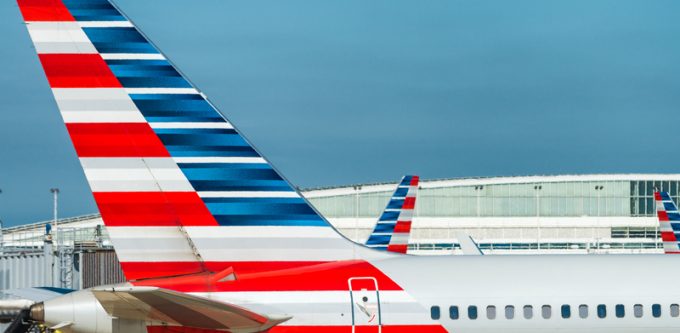DSV chief reticent on Schenker: the focus on growing market share
DSV focused on gains in market share, organic growth and making investors confident in its ...

The unexpected spike in volumes during November and December failed to stem the decline in the cargo revenue of the big three US airlines in the fourth quarter, despite increases in traffic – all saw a double-digit decline.
And their freight revenue for the full year fell more than 30%.
Q4 cargo revenue for American Airlines was $199m, a 24.2% drop on 2022, despite a 9.5% increase in cargo ton miles (CTM), reflecting downward pressure on rates and yields. Cargo revenues for the year dropped 34.1%, to $812m. Yield was down 31% in the quarter and 29% for the year.
Delta reported $188m in cargo revenue in Q4, a drop of 24% year on year. This marked an improvement over the first three quarters when declines had been between 28% and 37%. Delta’s tally for the year was $723m, down 31%.
United Airlines’ Q4 cargo revenue sank 14.8% to $402m, although its CTM tally was up 16.9% from a year earlier. It reported $1.49bn in cargo revenue for the full year, 31.1% lower than in 2022.
The contraction in cargo income is in stark contrast to their Q4 passenger results: Delta’s overall revenue was a record $14.2bn, 6% ahead of predictions; United’s climbed 9%, to $13.6bn; American’s was north of $13bn, a slip of 1% from a year earlier.
While passenger demand remained strong, cargo divisions battled a combination of headwinds, from inflation and a shift in consumer spending from products to services, to bloated inventories and a return of intermodal traffic to relatively smooth flows, which facilitated a modal shift to cheaper transport options.
Moreover, the rapid expansion of passenger demand fuelled a strong rise in belly capacity that depressed load factors, rates and yields. In November, the global airline cargo load factor was down 2.3% from a year earlier, as international belly capacity had increased 28.8%, according to IATA.
US carriers, which had started to ramp-up passenger flying ahead of most other airlines, found themselves on the defensive as they trailed rivals from other regions in capacity expansion for most of last year. Moreover, their transpacific operations have yet to return to pre-pandemic levels, particularly in the US-China market, which limited their ability to benefit from the peak season spike, largely driven by e-commerce out of China and new releases of consumer electronics.
American’s cargo revenues in the fourth quarter were just $6m higher than in the previous quarter, indicating scant benefit from the peak season.
The China-plus-one sourcing strategy adopted by a growing number of companies is another challenge for US airlines, given their limited ability to tap into origins like Vietnam or Cambodia, where they rely largely on Asian interline partners.
In the transatlantic market, where most of the international expansion of the big three US carriers played out last year, yields have been under strong pressure. In December, westbound pricing was down 59% on December 2022, while eastbound pricing fell 25%.
Comment on this article